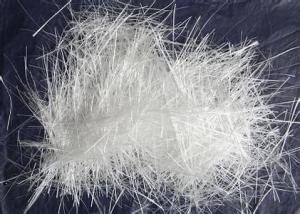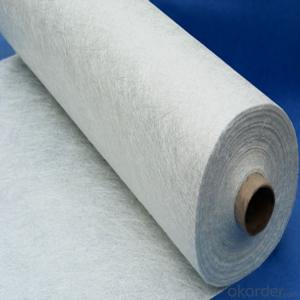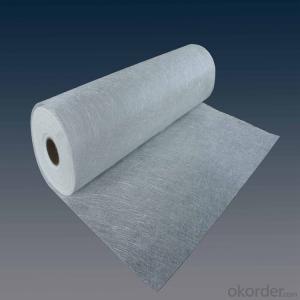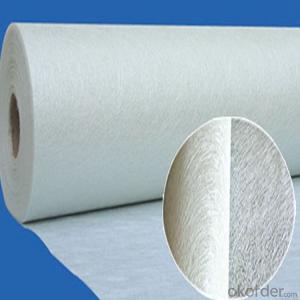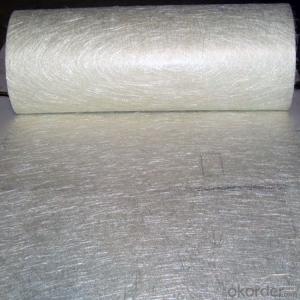Fiberglass Chopped Strand e-glass Fiber for Thermoplastic
- Loading Port:
- Shanghai
- Payment Terms:
- TT or LC
- Min Order Qty:
- 20000 kg
- Supply Capability:
- 200000 kg/month
OKorder Service Pledge
OKorder Financial Service
You Might Also Like
Description:
E-Glass Fiber Chopped Stands for Thermoplastic are based on silane coupling agent and special sizing formulation, compatible with PA,PBT/PET, PP, AS/ABS, PC, PPS/PPO,POM, LCP;
E-Glass Chopped Stands for thermoplastic are known for excellent strand integrity, superior flowability and processing property, delivering excellent mechanical property and high surface quality to its finished product.

Product Features:
Extremely low resin demand, delivering low viscosity to BMC paste
High impact strength; High LOI rate
High strand stiffness; Compatible with rubber
Product Specifications:
Property | Fibre diameter | Moisture Content | Size Content | Chop |
(%) | (%) | (%) | (%) | |
Mathods | IS01888 | ISO3344 | ISO1887 | |
3mm | ±10 | ≤3.0 | 0.1±0.05 | 98 |
6mm | ||||
9mm | ||||
12mm |
Packaging:
A:We have our own factory , we are on this business more than 10 years.
Each bag can be taken (15-25kgs)。 Could also take a big container bag.

FAQ:
1..Is your company a factory or trade company?
A:We have our own factory , we are on this business more than 10 years.
2.Who will pay for the express cost ?
A: We can support you free samples ,but express cost will be paid by you .
3.How long is the delivery time?
A:within 10-15 days after receiving deposit.
- Q: How is fiberglass chopped strand used in the consumer goods industry?
- Fiberglass chopped strand is commonly used in the consumer goods industry due to its versatility and strength. It is often incorporated into various products such as automobiles, sporting goods, furniture, and appliances. The chopped strands are mixed with resins or polymers to create a reinforced composite material, enhancing the product's durability, stiffness, and impact resistance. This allows for the production of lightweight yet robust consumer goods that can withstand daily wear and tear, making them more reliable and long-lasting.
- Q: Plastic fiber content in how to detect, there are no professional instruments?
- It is a glass ball or waste glass as raw materials by high temperature melting, wire drawing, winding and weaving process for production, the filament diameter of several microns to twenty micron, the equivalent of a hair 1/20-1/5, each bundle of fibers by hundreds or even thousands of root root filaments. Glass fiber is usually used as reinforcing material in composite materials, electrical insulation materials and insulation materials, circuit boards and other fields of national economy.
- Q: How does the cost of fiberglass chopped strand compare to other reinforcement materials?
- The cost of fiberglass chopped strand generally tends to be lower compared to other reinforcement materials such as carbon fiber or aramid fiber. However, it is important to note that the specific cost can vary depending on factors like the quality, quantity, and supplier.
- Q: Can fiberglass chopped strand be used in the production of recreational vehicles?
- Yes, fiberglass chopped strand can be used in the production of recreational vehicles. Fiberglass chopped strand is a versatile material that is commonly used in the manufacturing of various fiberglass-reinforced plastic (FRP) products, including recreational vehicles. It provides excellent strength and durability, making it an ideal choice for constructing the body panels, roofs, floors, and other structural components of RVs. The chopped strand is typically mixed with a resin matrix, such as polyester or epoxy, to form a composite material that is lightweight, yet strong. This composite can be molded into different shapes and sizes, allowing for the customization of RV designs and the creation of complex structures. One of the key benefits of using fiberglass chopped strand in RV production is its resistance to corrosion and weathering. Recreational vehicles often face harsh outdoor conditions, including exposure to UV radiation, moisture, and temperature fluctuations. Fiberglass reinforced with chopped strand provides a protective barrier against these elements, ensuring the longevity and durability of the RV's exterior. Additionally, fiberglass chopped strand offers excellent impact resistance, which is crucial for withstanding the vibrations and shocks encountered during travel on rough roads. It also has good thermal and electrical insulation properties, providing comfort and safety to the occupants of the recreational vehicle. Overall, fiberglass chopped strand is a reliable and widely used material in the production of recreational vehicles. Its strength, durability, resistance to corrosion, and versatility make it an excellent choice for constructing various components of RVs, contributing to their overall performance and longevity.
- Q: How does the fiber alignment affect the performance of fiberglass chopped strand?
- The performance of fiberglass chopped strand is significantly determined by the alignment of its fibers. The alignment refers to how the individual glass fibers are oriented and arranged within the chopped strand. When the fibers are randomly aligned, the material exhibits isotropic properties, meaning that its mechanical properties are the same in all directions. This random alignment allows the chopped strand to have good strength and impact resistance in multiple directions. It also increases the overall flexibility of the material, making it easier to handle and process during manufacturing. On the other hand, when the fibers are aligned in a specific direction, it creates an anisotropic material with varying mechanical properties depending on the orientation of the fibers. The strength and stiffness are higher in the direction of the fiber alignment, while they are relatively lower in perpendicular directions. This alignment is often achieved by applying tension during the manufacturing process, resulting in a more rigid and directional material. The fiber alignment also affects the ability of fiberglass chopped strand to reinforce other materials. When randomly aligned, the chopped strand can evenly distribute the load and provide reinforcement in multiple directions, making it suitable for applications requiring isotropic strength. Conversely, when aligned in a specific direction, it can provide enhanced reinforcement and stiffness along that axis, making it suitable for applications where directional strength is required. In conclusion, the fiber alignment in fiberglass chopped strand has a significant impact on its performance. Random alignment provides isotropic strength, flexibility, and impact resistance, while specific alignment results in anisotropic properties with higher strength and stiffness in the aligned direction. The choice of fiber alignment depends on the specific application requirements and the desired mechanical properties of the final product.
- Q: What are the typical processing temperatures for fiberglass chopped strand composites?
- The typical processing temperatures for fiberglass chopped strand composites range from 150°C to 200°C.
- Q: Does fiberglass chopped strand improve the impact resistance of composite materials?
- Yes, fiberglass chopped strand does improve the impact resistance of composite materials. The addition of fiberglass chopped strand to the composite matrix enhances the material's ability to absorb and distribute impact energy, making it more resistant to cracking, fracture, and other forms of damage caused by impact forces.
- Q: How does the fire resistance of fiberglass chopped strand compare to other reinforcing materials?
- The fire resistance of fiberglass chopped strand is generally superior to many other reinforcing materials. Its inherent properties allow it to withstand high temperatures and prevent the spread of flames, making it a desirable choice for various applications where fire safety is a concern.
- Q: What is the cost of fiberglass chopped strand compared to other materials?
- The cost of fiberglass chopped strand is generally lower compared to other materials such as carbon fiber or Kevlar.
- Q: Can fiberglass chopped strand be used in the production of automotive interiors?
- Fiberglass chopped strand has the capability to be utilized in the manufacturing of automotive interiors. This reinforcing material is extensively employed in multiple industries, including automotive production. It grants strength, durability, and impact resistance to the products in which it is incorporated. When used in automotive interiors, fiberglass chopped strand can be combined with resins or other substances to form composite materials that are subsequently molded into different components like door panels, dashboards, and console trims. These components necessitate exceptional mechanical properties to endure the daily demands of usage, and fiberglass chopped strand assists in providing these properties. Moreover, fiberglass chopped strand also enriches the aesthetic appeal of automotive interiors by facilitating the creation of intricate designs and textures. Consequently, it proves to be an appropriate material for the production of automotive interiors.
Send your message to us
Fiberglass Chopped Strand e-glass Fiber for Thermoplastic
- Loading Port:
- Shanghai
- Payment Terms:
- TT or LC
- Min Order Qty:
- 20000 kg
- Supply Capability:
- 200000 kg/month
OKorder Service Pledge
OKorder Financial Service
Similar products
Hot products
Hot Searches
Related keywords

